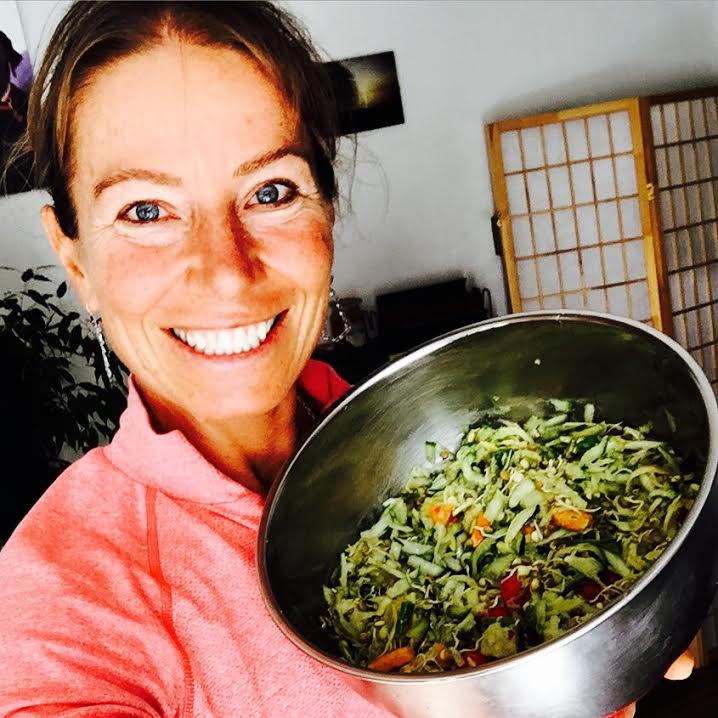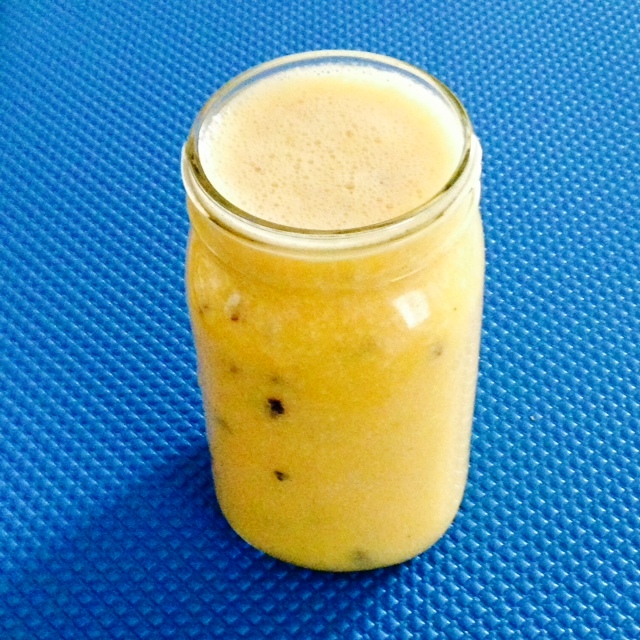Our bodies contain about 90% of bacteria and only 10% of human cells. That sounds pretty extreme, if you haven’t heard this before. We are colonies of different bacteria.
Fermented vegetables are extremely healthy for your digestive tract and re-installing the healthy bacteria. They are very easy to make at home. Let’s look how to make an own raw, fermented cabbage, also known as sauerkraut.
You can eat it as it is as snack, or add to any dish. It is VERY low in calories and therefore a great evening snack when you search around your fridge for something to munch on when you should not be munching :-)

Fermented Cabbage
Ingredients
It’s very simple, you don’t need so much:
- 1 head cabbage (green or red)
- 2 tablespoons sea or Himalayan salt (you don’t eat processed salt, right?)
- water, as needed
Directions
Using clean tools is important. You probably always use clean knives and bowls, but because we want to create good bacteria in your cabbage, we don’t want to have some lurking bad bacteria around to mess up our work.
- Wash your cabbage, remove the big outer leaves and save them for later. You will use them!
- Shred the cabbage with a knife, shredder, Vitamix or whatever tool you enjoy to use. Transfer the shreds into a large bowl.
- Add 2 tablespoons of salt and massage the cabbage thoroughly until it breaks down from the salt and releases a lot of fluids.
- Transfer the cabbage into a jar, preferably wide so you can stick your hand in it.
- Pack it really tightly and remove all air from the jar. This is extremely important!!! You can pack it with a spoon or your fist.
- Add a bit of water so the entire cabbage is submerged under the water.
- Now cover the cabbage with the big leaves that you saved for later, and you can even put an extra weight or rock on a top of it to ensure that the cabbage is under the water at all times. Seal the lid tightly.
- Store the cabbage in a warm area (or insulated bag) for 3–7 days. You can check on the cabbage after 3 days.
- When you like the level of fermentation, remove the weight and discard the large leaves.
- It can happen that a layer of mold develops on the outer leaves. This doesn’t mean that your work is ruined. Just discard the layer and the cabbage underneath the brine is safe. But as always, use your common sense and taste buds, if it doesn’t smell or taste good, don’t eat it.
- Store your sauerkraut in the refrigerator for several months. Mine lasts only a few days, oink oink… :-)
You can also get creative and add other veggies or fruits into your sauerkraut, such as carrots, apples, cranberries, ginger, red beet, garlic, cucumber, and many more. Only your imagination is the limit.
Enjoy your healthy creations and know that your bacteria is happy too.




